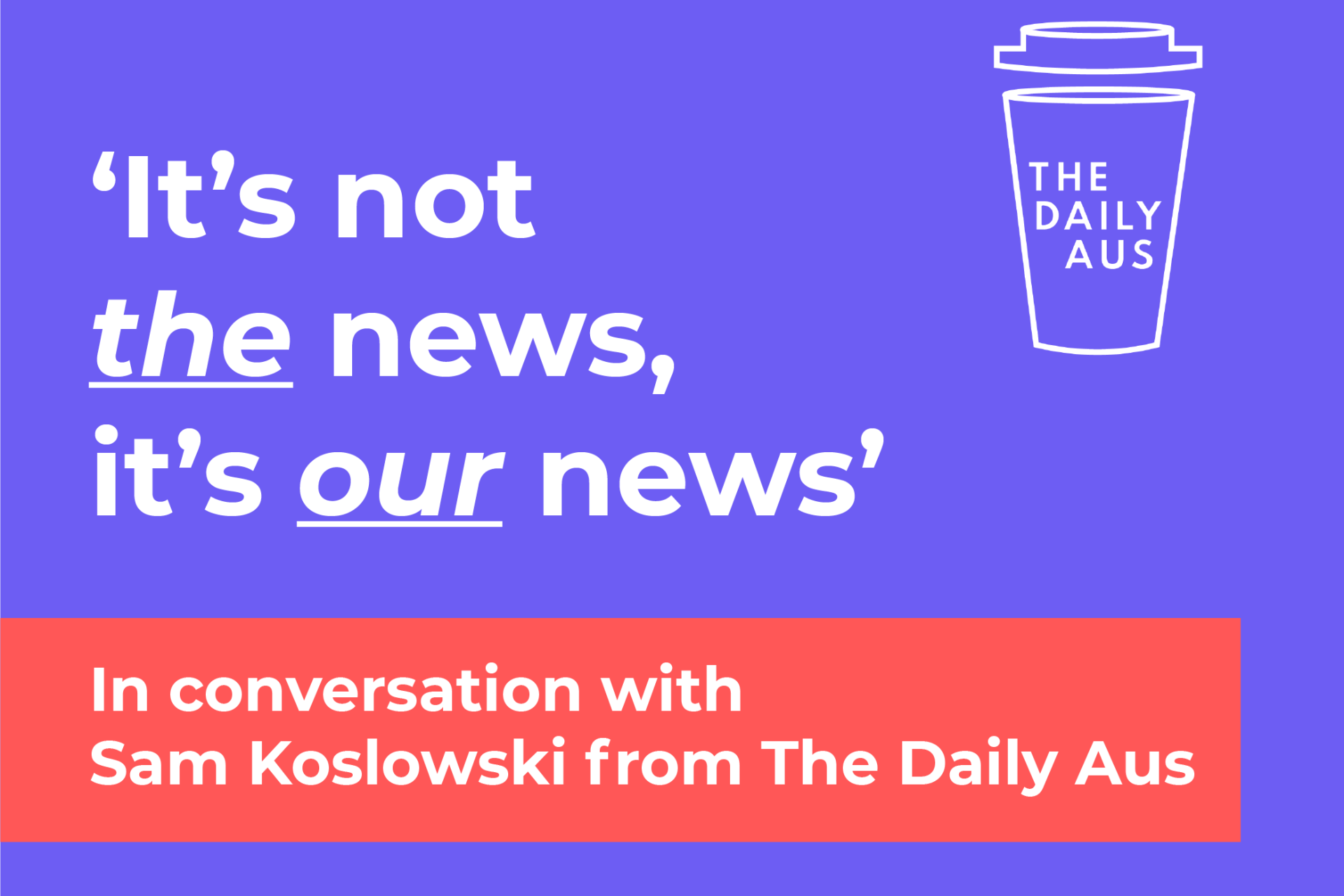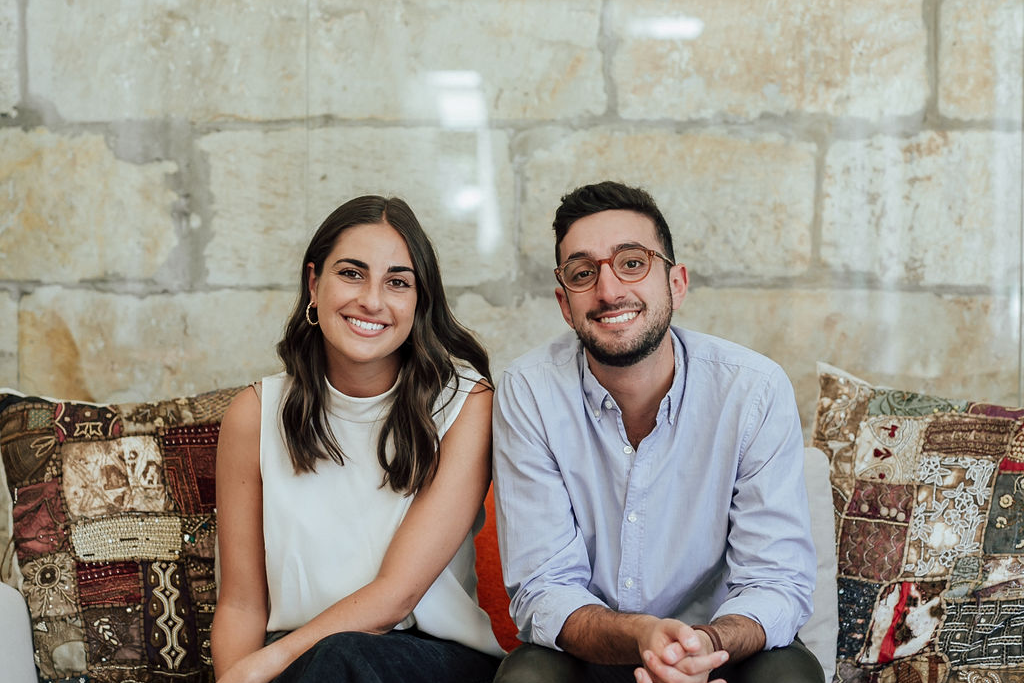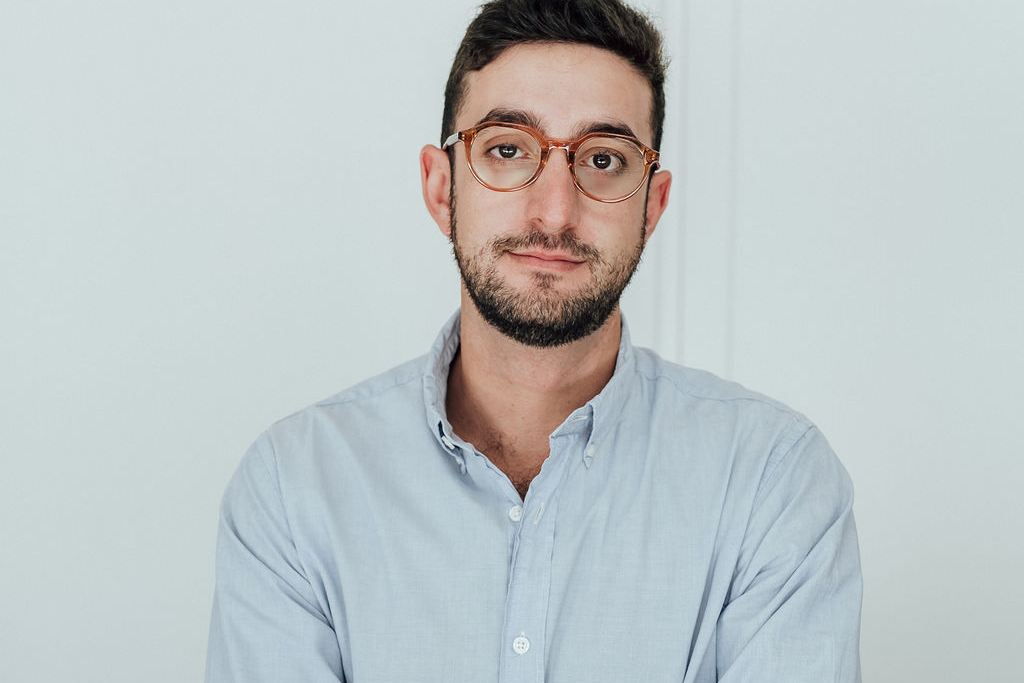
As we inch closer towards some semblance of COVID-normal in NSW, it’s hard to forget that only a few short weeks ago we were all glued to our screens for the daily 11 am presser, bracing ourselves for the bad news. As we watched case numbers climb and, tragically, the death toll rise, it became easy to fall into a doom-scroll of COVID-related media. It became the norm to wake up to news notifications announcing new restrictions or see tweets from NSW Health with updates on the vaccination rollout. While the pandemic changed many things, it especially changed the way we use social media. Recent data reveals, unsurprisingly, Gen Z and millennials take the lead in accessing news content through social media. As digital natives, it’s clear we want news that’s accessible, and we aren’t always prepared to leave social media to access it. Lucky for us, The Daily Aus has been leading the way in social-first news coverage in Australia, giving us the digestible, accessible news we’ve been needing. Founded by UTS Alumna Zara Seidler (24) and Sam Koslowski (26), The Daily Aus reaches over 260,000 Australians every day.
During the most recent lockdown, I found it hard to go a day without checking their grid. For many of us, The Daily Aus became the go-to place to fact-check daily case numbers and access recent updates. Along with a podcast and newsletter, they mainly deliver explainer style content via Instagram, demystifying and unpacking current affairs for their audience.
While Millennials might not sit down to watch the evening news, that doesn’t mean we aren’t paying attention. 85% of The Daily Aus’ followers are under the age of 34, clearly showing a strong culture of media engagement among young Australians.
Vertigo was lucky enough to chat with one of the founders of The Daily Aus, Sam Koslowski, about all things news. He shared his insights on fake news, media literacy and the role of social media in public interest journalism.

"...traditional media doesn’t quite understand the power and the effectiveness of a well-engaged social media audience."
EE: Identifying misinformation, disinformation and fake news are some of the biggest issues young people face when engaging with news media, especially right now. How is The Daily Aus tackling these issues?
SK: The most important thing we do is listen. We really emphasise a two-way relationship between publication and audience. To us, listening means scanning the comments section all the time and looking for signs of misinformation and providing a feedback loop with the audience so that they're actually comfortable enough to DM and ask us to clarify something. It’s that transparency and interaction that social media can facilitate so nicely. It can also mean that there's less misinformation, because you can literally ask the news a question, and that’s a relationship that we're not used to. The other key way we prevent misinformation is by creating a culture of never being wrong. We want people to know that if they're reading something on The Daily Aus, it's one hundred per cent accurate. If that means we're a little slower than another page to get out details regarding new restrictions or vaccination changes, we always say internally that we would rather be slow but right, rather than fast and wrong.
There's always this rush to try and get something out quickly on social media because you can capitalise on the quick traffic. But, if we can show our audience that we're right one hundred per cent at the time, then they'll rebuild their trust in the media.
EE: What can young Aussies do to improve their media literacy?
SK: I think just presume that everything that you've been shared, is shared for a particular reason. The reason a person is sharing something is probably to get you to think like them or to share their perspective with you. It's always really important to interrogate those sources. We know that young people are getting informed because of links sent in WhatsApp groups, in Facebook chats and in DMs. For us, that’s where this misinformation risk lies.
EE: You also do an excellent job at unpacking complex issues like politics, climate change and COVID-19 for your audience — you’ve really nailed the explainer style news bulletin. Why did you choose to use that style of news for your Instagram?
SK: Our mission about providing people with a base layer of information so that they can be more informed, lends itself best to explainers. There’s kind of two different ways to do the news: the explainer model and the rolling coverage of current affairs. What we ourselves were frustrated with — also what we thought our generation was frustrated with — was that it was very hard to jump into that rolling coverage without the right context. For example, in the current ICAC hearings with the former Premier Glayds Berejiklian — it's really hard to tap into what's happening today in those hearings if you don’t know what ICAC is.
If you think about the news as a big, long series of Home & Away, it’s really hard to watch a random Wednesday night episode and understand why this person is having an affair with this person, and why this person just had a car crash and this person's really upset about it. They've all got characters, they’ve all got backstories, they’ve all got plotlines. So it’s our job to explain those characters and plotlines so that when you pick up a random episode of the news, you get it. That’s constantly the philosophy we try and work with.
EE: One of your goals in setting up The Daily Aus was to make news for digital natives. Based on your growth in the past year, it’s clear there’s an appetite for the style of news that you’re making. Have you seen a shift in the current Australian media landscape in regards to accessibility for young people?
SK: We are beginning to. We've been very surprised that the big players in town haven't gone quicker to the formats we've been working with. But we're beginning to see players, whether it be Newscorp or Nine Fairfax, adopt The Daily Aus model of writing. That’s not surprising because they're trying to tap into a whole new group of people, who in their minds, hopefully, will be future paying subscribers. It's much harder to get to that group of people through traditional means.
We're buying fewer hard-copy papers. In the pre-digital era, a young person might buy the newspaper because they need to buy a second-hand car or maybe they’re looking to buy their first home. Now, that classified angle is gone, so it's harder to get young people to engage with the news off-platform.
The problem is that there's still too quick of a transition between social media and getting people off the apps. When we're scrolling on Instagram, we don't like to have to leave Instagram to go on to something else. What traditional media are doing is putting up the headline as a post on Instagram and saying: ‘Click here for more’. That’s a really hard transition to pull off.
To us, that shows traditional media doesn’t quite understand the power and the effectiveness of a well-engaged social media audience. I think they will. Our audience size is now hard to ignore. We are bigger than the Guardian Australia. We're bigger than all other print papers in Australia. The pages bigger than us now are really just Channel 9 and the ABC. We’re hoping to catch them as well. It’s hard to ignore why our model is working.
"Our readers are actually becoming a part of the news."

EE: I found it really refreshing as a student journalist to see you building something new that doesn’t necessarily follow the traditional news media landscape in Australia.
SK: Yes, but there's still a lot of value in traditional media; both Zara and I have worked in traditional media companies and we learnt a lot of our base skills from there. But when I’m talking to traditional media, the point that I always try and get across is, while the way in which we’re communicating might have changed and the way in which people are getting their news might have changed, for us as an organisation, the fundamentals of journalism haven’t changed. We're still emphasising quality. We’re still emphasising accuracy. We're still looking at what stories are in the public interest and what stories need to be told. We're still fact-checking our sources. We're still treating them with confidentiality. All of those fundamentals that we all learnt at uni of what it means to be a journalist, they’re still there. It’s just that the format has changed. That can often be overlooked, I think.
EE: You’re clearly not afraid to engage with your audience. You’re often posting callouts and polls on your story, asking your followers to respond. You want to know their opinions. What kind of impact is crowdsourcing having on the news you create and cover?
SK: We're finding the polls to be a really effective way to get our name out there in traditional media to represent the views of young people. It’s a great way for us to represent our readers. More so than that, it's exactly fulfilling our mission: it’s not the news, it’s our news. Our readers are actually becoming a part of the news. We’re building a new podcast series at the moment and want to do an episode on mental health and mental health policy in Australia. We asked our readers to share with us the barriers that they found prevented them from taking advantage of mental health services in Australia. Now, have a really rich pool of information that can help form the questions we're going to ask the Minister for Mental Health. That to me is how journalism should work. We really are representing the people’s interests and putting questions to senior decision-makers, based on the real-time feedback we’re hearing. That’s so hard to do if it’s a letter to an editor that you have to post in the mail, open in a letter room, compile it and everything. We're getting live feedback. A poll we put up can get above 40,000 responses. An opinion poll you see about approval ratings for a prime minister is often based on two or three thousand people. We’re getting 20 times that. That can give you an insight into Australia — it’s what the people think.
"...it's all coming together to build literacy so when you walk into a voting booth, you know exactly who you’re voting for and why. "
EE: Can you tell us more about this new podcast series?
SK: We’re doing an episode on climate change as well. We’ve spoken to Adam Bandt, the leader of the Greens, and Bridget McKenzie, who is a senior decision-maker in the nationals, to bring together two really opposite views on climate change in a way that’s going to help young people navigate this topic… because it’s bloody complicated. It only works if you understand what net-zero is, and not just be able to say net-zero and throw it in a sentence but actually get it. That's why we did an explainer with a bathtub explaining what net-zero is in a video. So, it's all coming together to build literacy so when you walk into a voting booth, you know exactly who you’re voting for and why.
Find more from The Daily Aus here:
Instagram - @thedailyaus
YouTube: The Daily Aus
Website – www.thedailyaus.com.au

 -
-